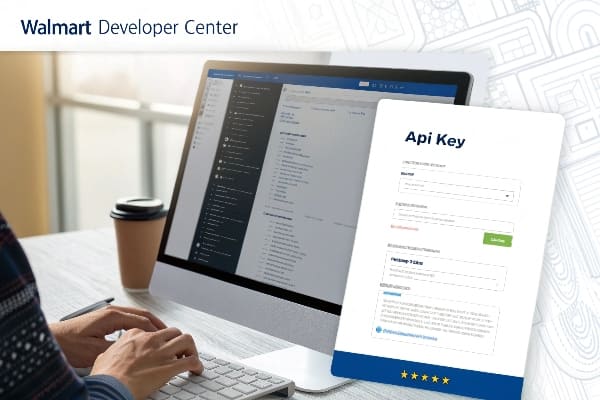I remember standing in a bustling baby aisle, worried about my brand’s compliance status. I wanted to ensure my product met every guideline without wasting time or money.
Follow official safety guidelines, focus on accurate labeling, and keep packaging consistent with both Walmart and Target’s rules. Conduct testing, secure certifications, and maintain proof. Stay updated on policy changes to avoid costly rejections.

I realized that it can be stressful when big retailers demand strict measures. I will explain key steps so you can enter the market with more certainty.
How to get approved for Walmart Marketplace?
I once spent long hours reading Walmart’s approval requirements. I saw that many hopeful sellers felt confused. I want to clarify the main steps so you can move forward.
You must create a Walmart Seller Account, provide business credentials, and meet performance requirements. You need a solid product lineup, valid U.S. tax identification, and proven operational capacity. That combination helps you pass Walmart’s approval process quickly and avoid unnecessary rejections.

Understanding Key Requirements
I noticed that Walmart looks for established sellers1. They want a proven track record, stable supply chains, and clear compliance documents. I learned that they rely on several checks. They verify whether you have a proper business entity and whether your products meet U.S. safety and labeling standards2. When I first applied, I had to show that my company could handle a certain level of demand without failing. That included timely shipping and proper customer support. Many sellers get stuck because they do not have a U.S. business tax ID3 or a strong performance history.
Preparing Your Documents
I gathered my business license4, tax paperwork, and product information. Then I uploaded them to the Walmart application portal5. The portal asked for your legal entity name, address, and details about your inventory. The system reviews your data and decides if your history fits their criteria. Some sellers skip important steps, like verifying authenticity of their certifications6. This often leads to delays.
Here is a simple overview of the process:
| Step | Action | Result |
|---|---|---|
| 1 | Gather business license and tax details7 | Shows Walmart you have a legal, compliant entity |
| 2 | Prepare product information | Ensures your baby aisle products meet safety and labeling rules |
| 3 | Complete the online seller application8 | Lets Walmart review your credibility and operational performance |
| 4 | Wait for approval email | Confirms if you can proceed or if you need further documentation |
I found that the approval process could take a few days or up to a few weeks. Having complete documentation helped me avoid repeated requests for more details. That is why I always recommend that new sellers do not rush. Once you get approved, you can access Walmart’s Seller Center9, list your items, and manage your orders.
How much does it cost to put a product in Walmart?
I remember asking this question at the start of my own journey. I faced confusion about listing fees, marketing costs, and other hidden charges. I want to simplify this for you.
It depends on production, shipping, packaging, and possible Walmart referral fees. The main costs involve product manufacturing, labeling requirements, and compliance testing. You might also pay for marketing and promotions in Walmart stores.

Breaking Down Potential Expenses
I discovered there was no single flat fee to place a product on Walmart’s shelves. Instead, you must consider different cost factors. First, there is the manufacturing cost10 of your baby aisle product. If you want custom cardboard displays11 (like I do), that can add extra design or prototyping fees. Then, you must comply with labeling and safety rules. Testing for safety certifications12 can cost more money. For instance, if your item needs child-safety verification, you might need to hire a lab for reports.
Next, shipping and logistics come into play. I always factor in freight costs13 from my factory to the distribution centers. If I need to meet Walmart’s packaging standards14, I often pay more for protective materials. There can also be marketing or co-op advertising costs if you plan to have in-store promotions15. In my experience, these promotions help build visibility, but they can be expensive.
Referral Fees and Other Charges
When you sell on Walmart Marketplace, you might pay a referral fee16 on each sale. That rate varies by category. Baby products might have a specific percentage that you will see in Walmart’s fee schedule17. While you might not face an upfront listing cost, you still must manage inventory, packaging, and shipping18 on your own or through a third party.
Below is a quick reference table:
| Cost Component | Description | Reason |
|---|---|---|
| Manufacturing19 | Producing your baby aisle product | Core expense (materials, labor) |
| Safety Testing20 | Getting certifications or lab reports | Ensures compliance with retailer standards |
| Logistics & Shipping21 | Transporting products to distribution centers | Aligns with Walmart’s shipping requirements |
| Marketing & Promos | In-store displays, co-op ads, special promotions | Boosts brand visibility but adds costs |
| Referral Fees | Percentage of each sale on Walmart Marketplace | Varies by category, covers marketplace overhead |
I discovered that planning and budgeting upfront can reduce risk. I always advise factoring in at least some extra funds for unexpected compliance updates. If you budget correctly, you can avoid last-minute surprises.
Do you need brand approval to sell on Walmart?
I was once unsure if I needed a specific brand authorization to stock my baby aisle product. I realized Walmart expects some brand credibility. Let me share what I learned.
You must prove you have the right to sell that brand on Walmart. If you own the brand, show documentation. If you resell, verify legitimate distribution rights to avoid compliance issues.

Importance of Brand Credibility
Walmart wants to protect itself from counterfeit items. They want to ensure that any baby aisle product you list is authentic and meets safety rules. If you are the brand owner, you should register your brand and trademark details. When I registered my own brand, Popdisplay, I had to provide my brand certificate22 and trademark documents23 to confirm ownership.
Steps to Secure Brand Approval
I learned that you must confirm brand identity24 before listing. This means providing brand certificates, official brand websites, or product packaging evidence. If you are not the brand owner, you might need an authorization letter25 or distribution agreement26. Walmart checks these to confirm you are not offering unauthorized items.
Here is a simplified outline:
| Step | Action | Benefit |
|---|---|---|
| 1 | Register your brand legally (if not done already) | Gives official proof of your brand’s existence |
| 2 | Gather brand certificates27, logo files, etc. | Confirms authenticity when submitting to Walmart |
| 3 | Provide distribution agreements28 if reselling | Prevents conflicts with brand owners |
| 4 | Follow up on any brand-related questions | Ensures a smoother approval process |
I recall helping a friend who tried to list baby strollers under someone else’s brand. Walmart asked for proof of authorization29. He did not have it, so his listing stalled. Once he provided a signed distribution agreement, his products finally went live. This process protects brand owners and ensures the marketplace stays trustworthy. It might seem tedious, but it also helps your buyers feel safe purchasing from you.
Where to find Walmart client secret?
When I began working with Walmart’s API integrations, I kept wondering where the client secret was. Without it, I could not connect my inventory or manage listings. Here is what I discovered.
You can get the Walmart client secret by creating an API key in the Walmart Developer Center. Once you register your seller account, sign up as a developer and retrieve your private key.

Generating Your Keys
Walmart’s portal has a Developer Center where you can create new API credentials30. I found it by logging into my Walmart Seller Center31, then navigating to the API keys section. You must generate a primary key and a secondary key. Each set has a client ID and a client secret32. The client secret is a unique token that you must keep confidential.
I had to be careful because sharing these credentials can jeopardize my entire store. I remember making the mistake of storing the key in an unprotected file33. I quickly realized that if anyone accessed it, they could manage my listings34 and cause problems. So I ended up using a secure password manager35 to store my client secret.
Key Integration Steps
After retrieving your client ID and client secret36, you can connect external tools or custom software. This integration lets you automate tasks37 like inventory updates, order processing, and tracking. Many third-party applications38 require these credentials to sync with Walmart’s marketplace. If you run your own system, you can place these credentials in your configuration files. Just ensure you do not commit them to public repositories or share them via unsecured methods.
Here is a quick reference:
| Element | Purpose | Where to find |
|---|---|---|
| Client ID | Identifies your Walmart developer account | Walmart Developer Center after you register your seller profile |
| Client Secret39 | Authenticates requests to Walmart’s APIs | Generated alongside client ID, must be kept confidential |
| Security Tip | Store credentials in a password manager | Protects you from unauthorized access |
| API Usage40 | Manage listings, track orders, handle data | Full integration with Walmart Marketplace operations |
I found that once you have the secret, you unlock many automation possibilities41. I can now track which baby aisle products need restocking without manual intervention. This not only saves me time but also reduces errors.
Conclusion
Always follow each retailer’s guidelines, focus on reliable documentation, and keep testing procedures up to date.
Exploring this link will provide insights into Walmart’s seller requirements, helping you understand how to qualify effectively. ↩
This resource will clarify the essential safety and labeling standards necessary for compliance in the U.S. market. ↩
Understanding the process of obtaining a U.S. business tax ID is crucial for compliance and successful selling on platforms like Walmart. ↩
Understanding the significance of a business license can help you navigate the requirements for selling effectively. ↩
Exploring the Walmart application portal can provide insights into the process and help you avoid common pitfalls. ↩
Learn why certification verification is essential to prevent delays and ensure compliance in your selling process. ↩
Understanding the requirements for business licenses and tax details is crucial for compliance when selling on Walmart. Explore this link for comprehensive guidelines. ↩
Completing the online seller application correctly is vital for your approval. This resource will guide you through the process effectively. ↩
Walmart’s Seller Center provides essential tools for managing your sales. Discover its features to optimize your selling experience. ↩
Understanding manufacturing costs is crucial for budgeting and pricing your products effectively in retail markets. ↩
Custom displays can significantly boost product visibility and sales; learn how to leverage them effectively. ↩
Exploring safety certification requirements ensures your product meets legal standards and is safe for consumers. ↩
Understanding freight costs is crucial for budgeting and optimizing shipping strategies. Explore this link for detailed insights. ↩
Learn about Walmart’s packaging standards to ensure compliance and avoid extra costs. This resource can guide you through the requirements. ↩
In-store promotions can significantly impact visibility and sales. Discover effective strategies and costs associated with them. ↩
Understanding referral fees is crucial for sellers to calculate their potential profits accurately. Explore this link for detailed insights. ↩
Accessing Walmart’s fee schedule helps sellers understand the costs involved, ensuring better financial planning. Check this resource for clarity. ↩
Effective management of these aspects is vital for success on the platform. Discover strategies and tips to streamline your operations. ↩
Understanding manufacturing costs is crucial for budgeting and ensuring product quality in the baby aisle. ↩
Safety testing is vital to meet compliance standards and protect your brand’s reputation in the market. ↩
Knowing logistics and shipping requirements helps streamline distribution and align with retailer expectations. ↩
Discover the significance of a brand certificate in establishing your brand’s authenticity and ownership. ↩
Learn about trademark documents to protect your brand legally and prevent counterfeiting. ↩
Understanding brand identity is crucial for businesses to establish a strong market presence and connect with their audience effectively. ↩
A well-crafted authorization letter is essential for securing brand approval; learn how to write one effectively to avoid delays. ↩
Exploring distribution agreements can help you understand the legalities involved in brand partnerships and product distribution. ↩
Brand certificates validate your authenticity in e-commerce, enhancing trust with platforms like Walmart. Discover more about their importance here. ↩
Understanding distribution agreements is crucial for resellers to avoid conflicts and ensure smooth operations. Explore this link for detailed insights. ↩
Proof of authorization is essential for compliance and trust in online marketplaces. Learn more about its significance and requirements. ↩
Understanding API credentials is crucial for secure access to services. Explore this link to learn more about their importance and usage. ↩
Navigating the Walmart Seller Center effectively can enhance your API management. Check this link for a comprehensive guide on using the platform. ↩
Knowing the difference between client ID and client secret is essential for API security. This resource will clarify their roles in authentication. ↩
Understanding the risks can help you avoid potential security breaches and protect your data better. ↩
This resource will provide insights on securely managing your online store, ensuring your listings are safe from unauthorized access. ↩
Exploring this link will help you find reliable password managers to protect your sensitive information effectively. ↩
Understanding client ID and client secret is crucial for secure API integration. Explore this link to learn more about their importance and usage. ↩
Automating tasks can significantly enhance efficiency in e-commerce. Discover effective strategies and tools to streamline your operations. ↩
Finding the right third-party applications can optimize your Walmart marketplace experience. Check out this resource for top recommendations. ↩
Understanding the significance of Client Secret can enhance your API security and integration efficiency. ↩
Exploring optimization strategies can help you manage listings and track orders more effectively, improving your overall operations. ↩
Discovering automation benefits can help you streamline processes and reduce errors in your inventory management. ↩

